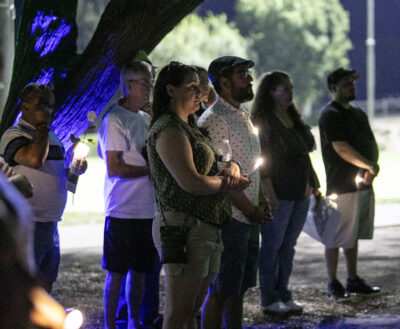As we age one of the consequences we may encounter, especially in the sunny Santa Clarita Valley, is the need for cataract surgery. It’s hard to come to grips with the fact we may be at the age that we need a surgery we associate with our parents and grandparents.
The idea of any kind of surgery, especially anything to do with our eyes fills most people with dread.
However, I just had my second cataract surgery on May 6, and the difference in my vision is nothing short of a miracle. I see colors more vibrantly, I can see farther and clearer when driving and everything looks brighter.
The National Eye Institute reports that cataracts are extremely common. More than half of all Americans age 80 or older either have cataracts or have had surgery to get rid of cataracts.
What Causes Cataracts?
The Mayo Clinic said cataracts, which is a cloudiness in the lens of the eye, is mostly associated with aging due to normal eye changes that begin to happen after age 40. That is when normal proteins in the lens start to break down. This is what causes the lens to get cloudy. People over age 60 usually start to have some clouding of their lenses.
In the beautiful SCV the sun can be a factor in developing cataracts.
The National Institute of Health reports that spending a lot of time in the sun, especially without sunglasses that protect your eyes from damaging ultraviolet rays, can be a factor in developing cataracts.
Cataracts can also run in families. Diabetics and smokers also have a higher risk of developing cataracts at younger ages.
Symptoms of Cataracts
Because cataracts usually grow slowly it is common not to notice the subtle changes in eyesight that can include:
Cloudy or blurry vision.
Faded colors.
Problems seeing or driving at night.
The need for additional light to read or do other tasks.
Lamps, sunlight, or headlights seem too bright. You notice more “glare” from bright lighting.
You see a halo around lights.
How Safe is Cataract Surgery?
Cataract surgery is one of the most common operations in the United States, and one of the safest according to the National Institute of Health.
Nearly four million cataract surgeries are performed each year.
The rate of complications, or infection, is reported by the National Eye Institute at between 0.13% and 0.7%.
What is Cataract Surgery?
During cataract surgery, performed by an ophthalmologist, a small incision is made and suction is used to remove the cloudy lens, which is replaced with an artificial, intraocular, plastic lens
The surgery is performed on an outpatient basis, usually at a center dedicated to eye surgeries.
During my cataract surgery I was first treated with numbing eyedrops, then had an IV inserted in my arm where I received a light sedation.
The anesthesiologist described it as a “three-margarita” experience. I was a bit concerned because for me, three margaritas could result in the “spins.”
However, I felt nothing more than a peaceful calmness.
You never are asleep during the surgery and, the best part, the surgery is completely painless.
I thought it would be weird, uncomfortable or disturbing to be awake during the surgery, but was surprised to find I felt comfortable and barely remember it.
From beginning to end, the entire process took about an hour. The procedure itself lasted maybe 20 minutes, at the most.
Choosing the Correct Lens
The most complicated part of cataract surgery is choosing the intraocular lens.
I was offered the option of a lens for distance vision or near (reading) vision.
I chose distance, the most recommended option.
People with certain eye conditions can also opt for “advanced” lenses that correct for certain eye conditions, as well as multifocal lenses that allow for both near and distance vision. However, insurance usually does not cover the cost of these “advanced” lenses.
My eye doctor said I wasn’t a candidate for those upgraded lenses, which was a relief, as they can cost upwards of $2,000.
Medicare covers cataract surgery that is performed using traditional surgical techniques or using lasers. Although Medicare covers basic intraocular lens implants, it does not cover more advanced implants.
After Cataract Surgery
Most surgery centers require that the patient have someone drive them home, more for the anesthesia rather than the surgery. Patients begin applying postoperative drops, usually to prevent infection and inflammation, the same day and must wear an eye shield at bedtime for a week after surgery.
My post-op instructions also included the prohibition for lifting anything heavy for a week after surgery.
After I left the surgery center my vision was somewhat blurry and I saw very bright halos around lights and anything that had a bright reflection (like the chrome trim on a car).
That phenomenon continued the next day, when I had to return to the eye doctor for a follow up.
However, by the second day after surgery, I no longer saw the halos. I kind of missed the effect, I had found the halos “pretty,” making every light seem like it was surrounded by a large feathered fan.
At my one-week follow-up I was told my vision was “excellent” after I was able to read down to the fifth line of the eye chart.
My one-month follow-up appointment will be held on June 11.
Some people report the feeling of “something” in their eye in the days following cataract surgery, but I did not have that sensation for either of my two cataract surgeries. My eyes felt normal with no pain or any hint that I had surgery.









